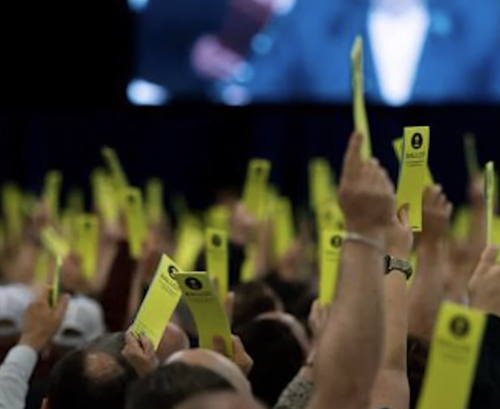One of the most interesting stories from the 2023 meeting of the Southern Baptist Convention was the easy win by the Rev. Bart Barber, a low-key Texas Baptist who was elected to a second term as president.
Under normal conditions, SBC presidents are elected to a second term without opposition.
However, words like “normal” do not apply to Southern Baptist life in the Internet age — in which there are ordinary conservative Southern Baptists and then there are those gathered in the Conservative Baptist Network tent.
Barber faced opposition from the right, which was a newsworthy fact in and of itself. I would say that the opposition came from the “theological” right, but I haven’t seen strong evidence that this conflict is about theology.
Still, Barber’s easy win in the New Orleans convention was a blow to the rebel conservatives and a win for the establishment conservatives. I found it interesting that some in the elite press didn’t seem to realize this, or appeared predestined to ignore it.
Check out the top of the New York Times wrap-up report on the SBC meeting. The massive double-decker headline tells the readers what really matters:
“Southern Baptists’ Fight Over Female Leaders Shows Power of Insurgent Right.”
Moves this week to oust women from church leadership in the nation’s largest Protestant denomination offer an early look into the psyche of evangelical America ahead of 2024.
Whoa. “Ahead of 2024?” Is this a reference to the next SBC election or a suggestion that what happened in New Orleans is important because it was some kind of symbolic foretaste of what really matters to the religion-desk at the Times — which is the 2024 White House race?
As always, remember: Politics is what is real. Religion? Not so much.
That journalism question, once again: Is this Times sermon “analysis” or “news”?










